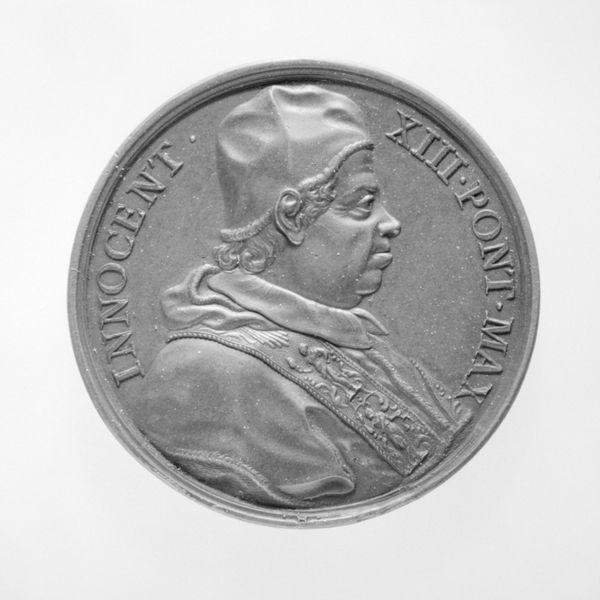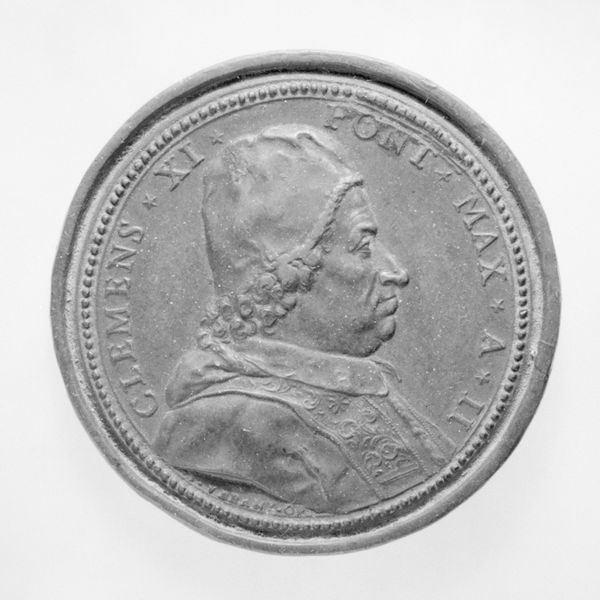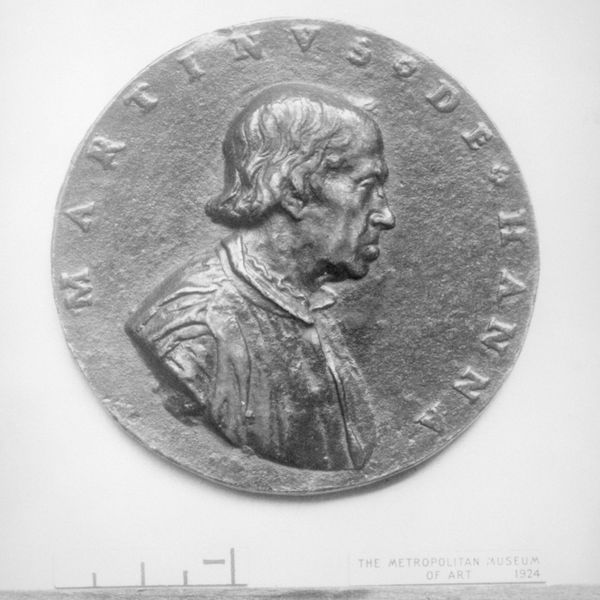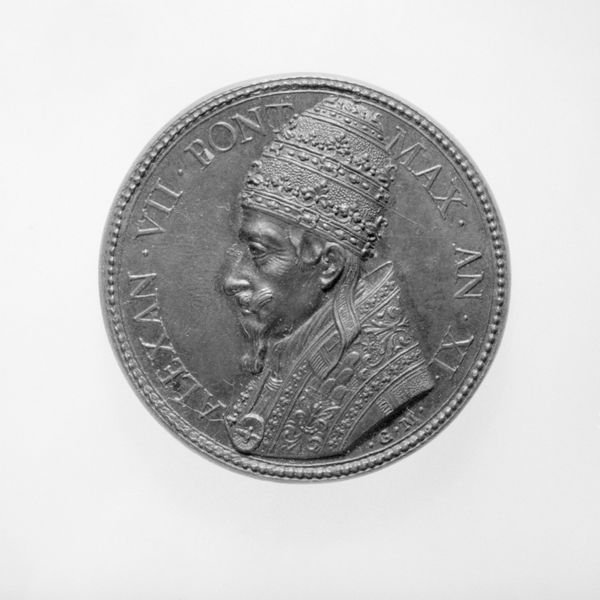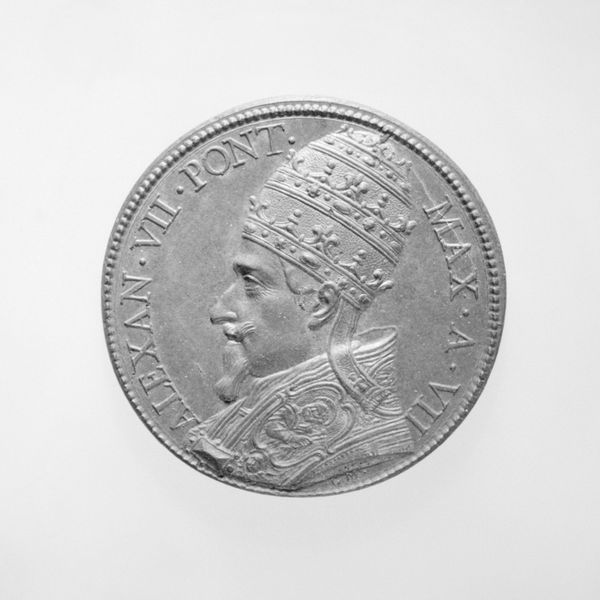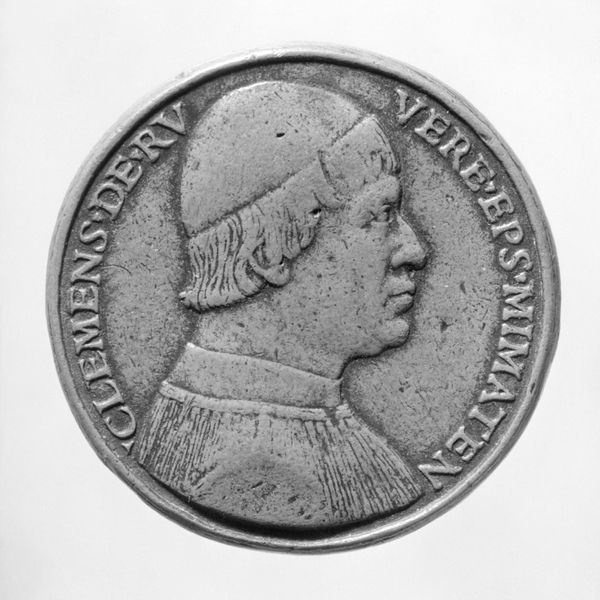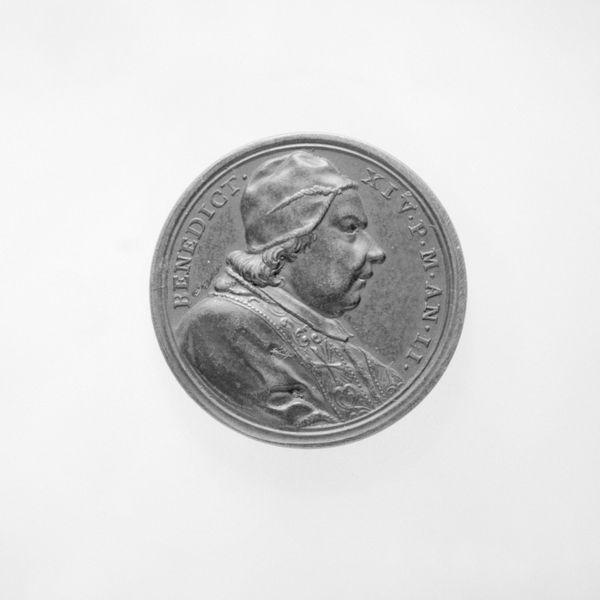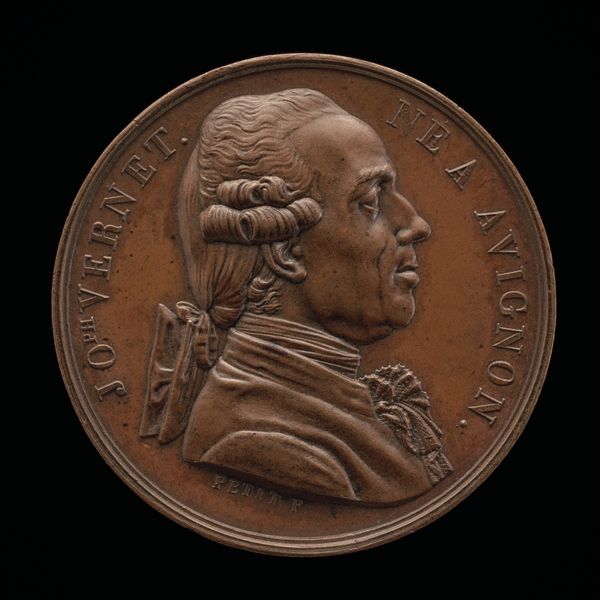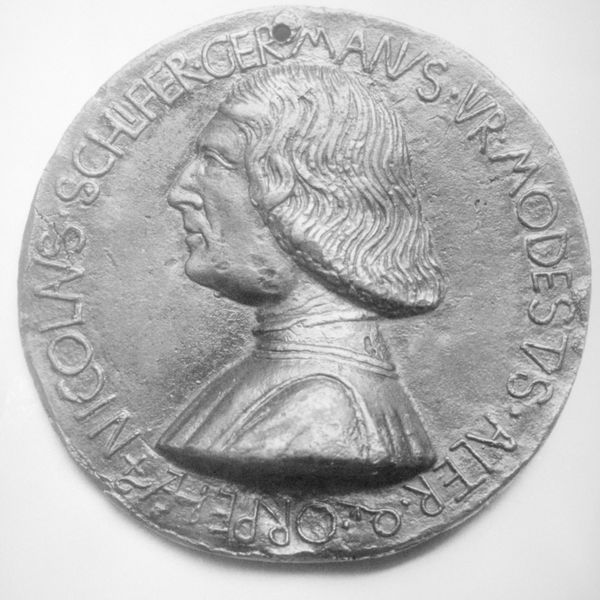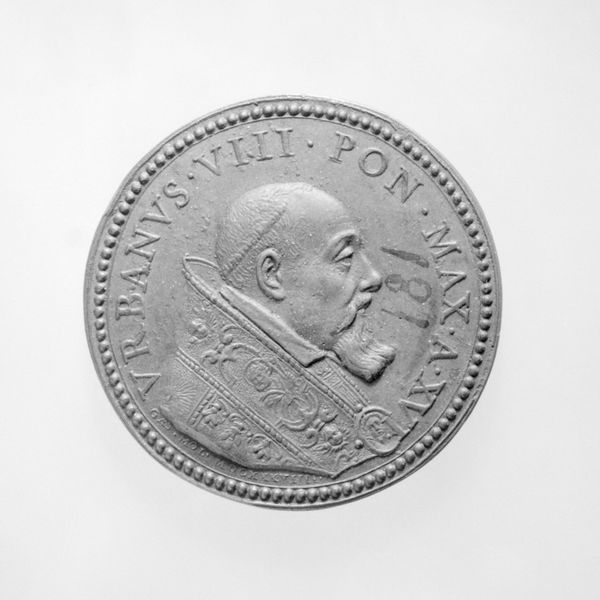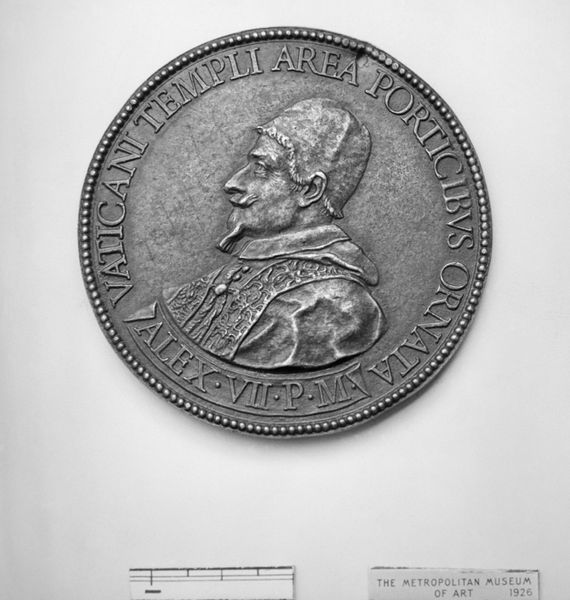
sculpture
#
portrait
#
medal
#
sculpture
#
11_renaissance
#
sculpture
#
decorative-art
#
profile
Dimensions: Diameter: 1 3/4 in. (44 mm)
Copyright: Public Domain
Editor: So, this is Giovanni Paladino's medal depicting Pius II, Pope from 1458 to 1464. It was made sometime between 1585 and 1599 and it's currently at the Metropolitan Museum of Art. It strikes me as very austere, and maybe a little lonely? How do you interpret this work? Curator: It's a fascinating object, isn't it? Notice how the profile evokes the tradition of Roman coins? It is no accident; this reflects a conscious effort to link Papal authority with the grandeur and legitimacy of the Roman Empire. Think of what the medal form *itself* implies: dissemination, reproduction, lasting power beyond a lifetime. Do you see how that ambition plays out visually? Editor: Yes, I see the connection you're drawing to Roman coins, the profile view, the inscription, all give it that sense of authority. But why depict him so plainly? Curator: Plain, perhaps, but consider what that simplicity communicates. In foregoing elaborate adornment, the portrait emphasizes Pius II's intellect and character. It's a visual strategy meant to create a perception of his inner virtue and wisdom. This medal serves as a potent symbol of Papal authority. What do you think such a strategic choice might suggest? Editor: So it's less about physical grandeur and more about intellectual and spiritual power. That makes sense! I was so focused on what seemed missing, I didn't see the message being conveyed. Curator: Exactly! Visual language speaks volumes, sometimes most powerfully in what it omits. It makes you consider what is necessary, culturally. Editor: I never considered the visual message of “omission” so directly before, which has been incredibly helpful. Thanks! Curator: My pleasure. I'm glad to have shared a new perspective with you!
Comments
No comments
Be the first to comment and join the conversation on the ultimate creative platform.
